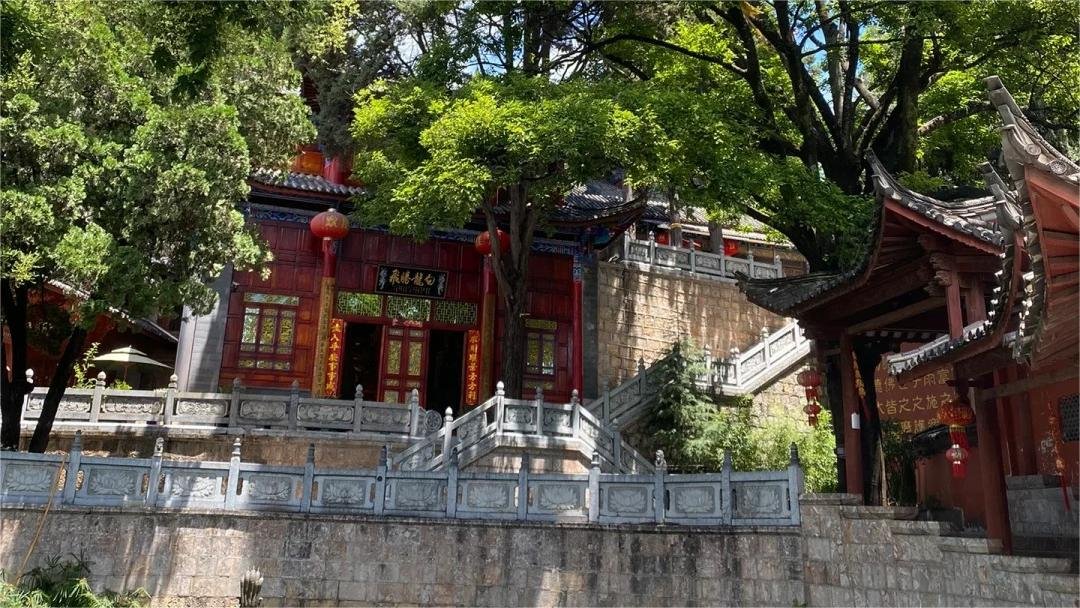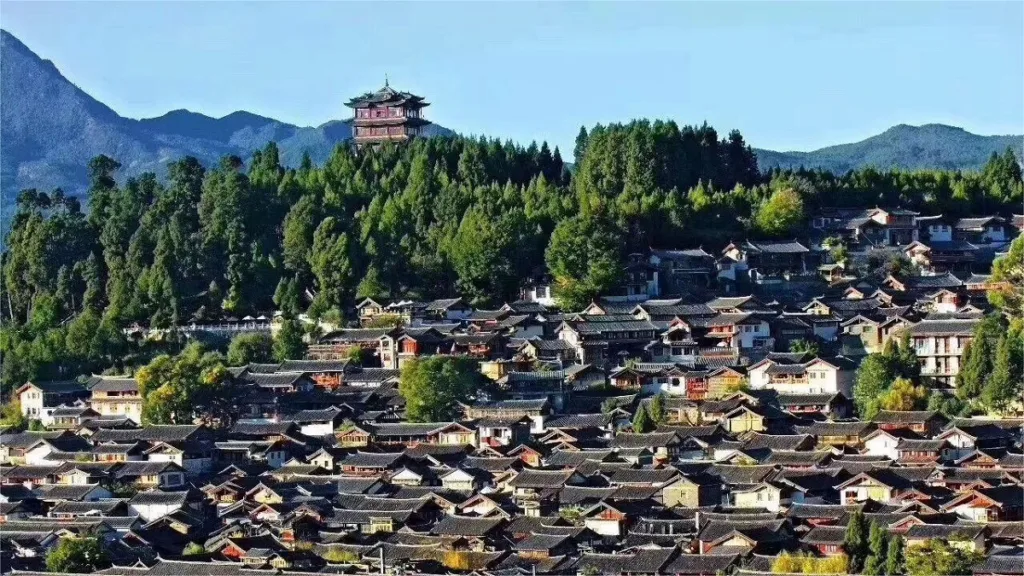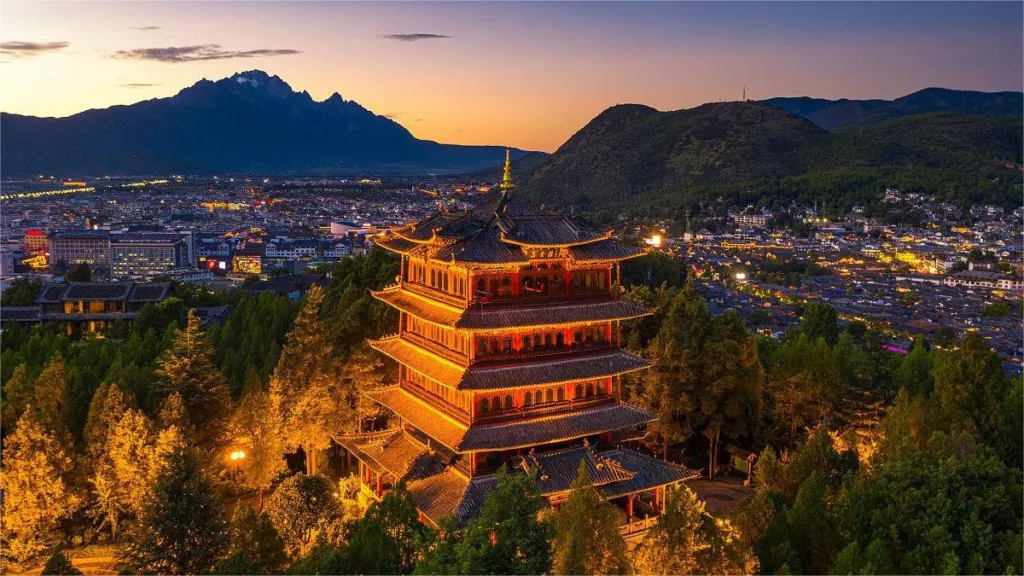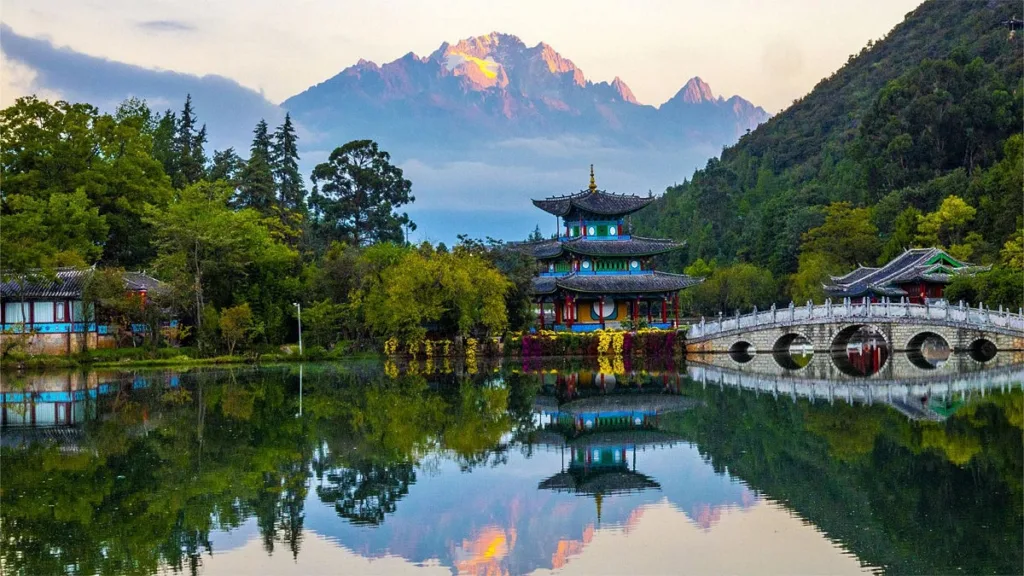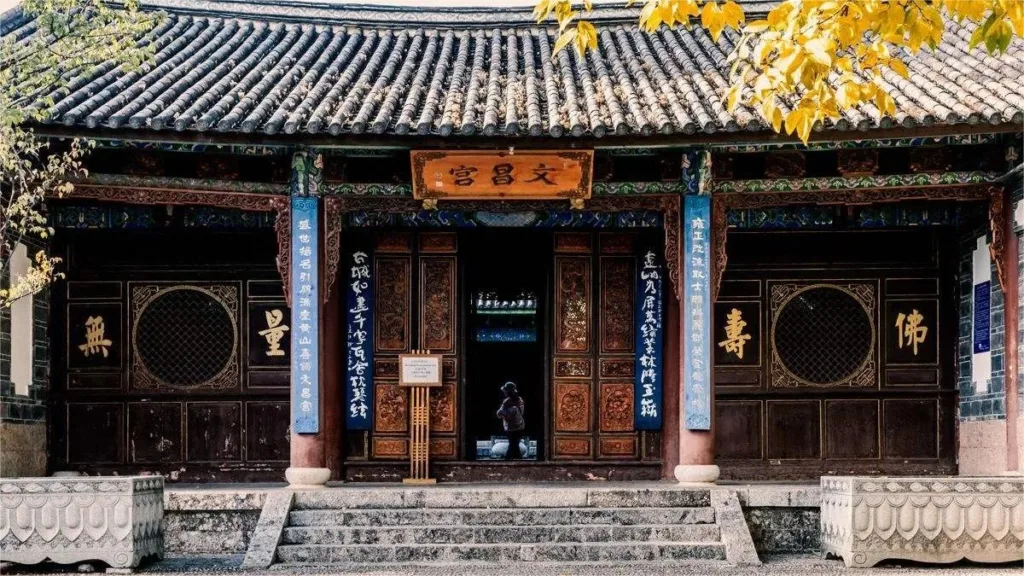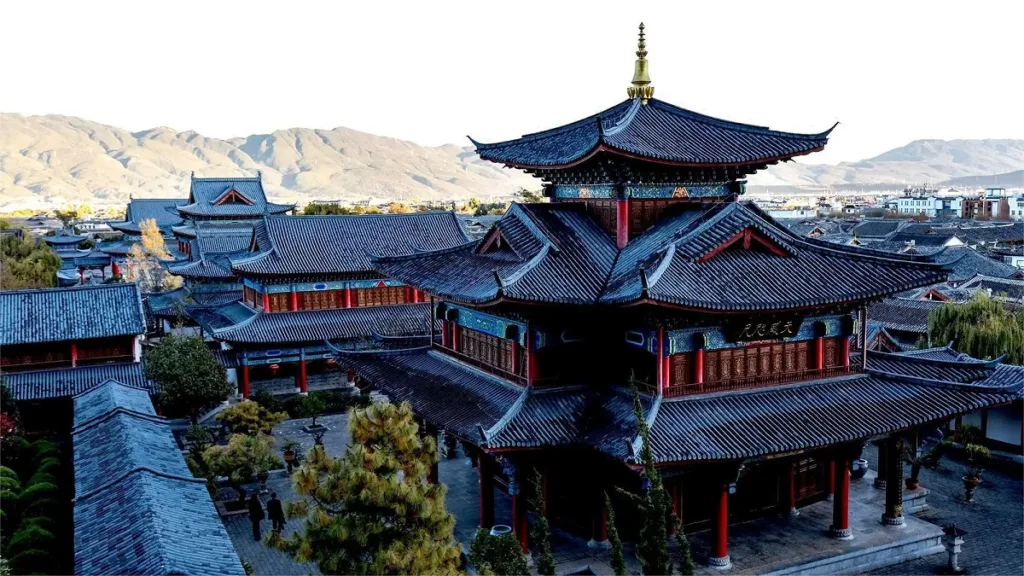Located within the ancient city area of Lijiang, Yunnan Province, Baima Longtan Temple (白马龙潭寺) has stood as a cultural and spiritual landmark since its establishment in the 19th year of Emperor Qianlong’s reign during the Qing Dynasty (1754 AD). Though damaged during the Xianfeng period due to military conflicts, it was rebuilt in the 8th year of Emperor Guangxu’s reign (1882 AD). Beyond its religious significance, Baima Longtan Temple served as a hub for literary activities, attracting poets and scholars from Lijiang who were inspired by its serene natural surroundings to compose poetry and essays.
The architectural style of the temple reflects a unique blend of ethnic characteristics, showcasing the rich cultural heritage of the region. The main structure, the Mahavira Hall, enshrines a statue of Shakyamuni Buddha, flanked by statues of eighteen arhats. The roof of the Mahavira Hall is constructed using traditional Naxi wooden architecture, utilizing interlocking wooden joints without the use of nails, showcasing the superior architectural skills of the Naxi people. Additionally, the temple complex features other buildings such as the Guanyin Pavilion and the scripture hall, each exuding an artistic ambiance.
Embedded within the southern wall of the annex building on the left side of the main hall, visitors can find eleven stone steles inscribed with Tang Dynasty poems by renowned Naxi poets such as Yang Zhulu, Ma Ziyun, Sang Yingdou, and Niu Tao. Crafted from white marble, these steles cover a total area of 1.57 square meters, providing valuable insights into Naxi literary and artistic traditions.
The natural environment surrounding Baima Longtan Temple is equally enchanting. A clear spring emerges from the rocks at the foot of the mountain, forming a circular pool with an area of nearly one hundred square meters known as the Baima Longtan (White Horse Dragon Pool). The pool is shaded by ancient trees, and fish can be seen swimming freely, making it a revered natural spring among the Naxi people. The flowing stream from the temple seeps into the pool and then cascades into three smaller pools, known locally as the Three-Eyed Wells. This harmonious integration of architecture and nature enhances the spiritual ambiance of Baima Longtan Temple, making it a serene retreat for both worshippers and visitors alike.
Basic Information
| Estimated Length of Tour | 30 minutes |
| Ticket Price | Free |
| Opening Hours | 8.00 – 17.00 |
Location and Transportation
Baima Longtan Temple is situated at No. 1 East Dajie Street, in the ancient city area of Lijiang, Yunnan Province, China. It is nestled at the southern foot of Shizi Mountain, located at the southern end of Lijiang Ancient Town. To get there, you can take bus 2A, 2B, 3, 4, 7, 10, 11, 14A, 14B, 15A, 15B, 18, 19A, 19B, 24A, 24B, 26, 27, 30, 31, 32, 36, 105, 107, or 209, get off at Bailong Square stop (白龙广场站), and walk about 150 meters to the north to reach the temple.

